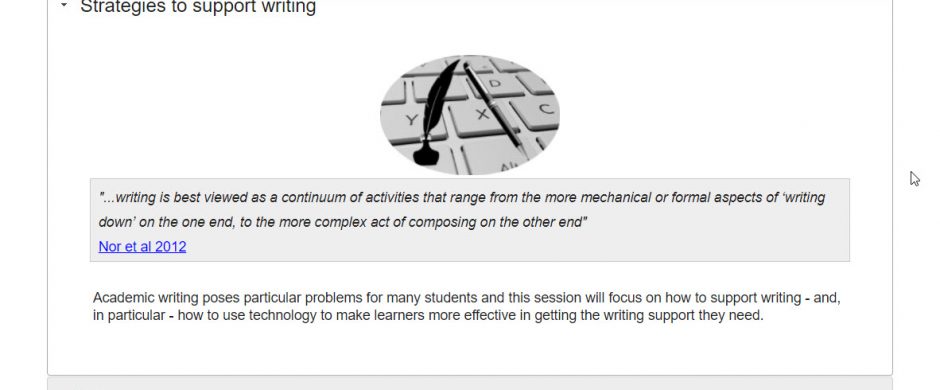Free data protection training including downloads for in-house and vle use
Time flies and the 2014 festive season has been and gone and because it was late in December when these training resources were completed and released by Jisc Legal I don’t think the resources have been as widely publicised as they might have been. So I thought it would be a good idea to help publicise the free training resources and also add some additional info and context not covered elsewhere.
Firstly it was a pleasure to support the Jisc Legal team in the development of these resources and I think great testament to their dedication in working so hard on this amidst all the JISC restructuring etc. The free training for both FE and HE staff is available for previewing via the links below but also available for download from Jorum too (whilst Jorum is still available) in both standard zip and SCORM formats.
View Data Protection for University Staff | Download SCORM
View Data Protection for College Staff | Download SCORM
Self-access and Flipped CPD
With all the talk about flipped classroom and flipped learning in recent months and years I thought it would be useful to add some comments about how I think these resources might be used for self-access and/or perhaps ‘flipped CPD’. Forgetting the hype involved in all the flipped learning talk (and apologies for referring to flipped CPD too) importantly I’d like to comment on how I think these resources might be used together with f2f training, or perhaps other online guidance, to not only facilitate understanding but ideally inform and achieve change in behaviour too.
If you access the materials you’ll read and hear that data protecton training is regarded as a requirement now and as such you might conclude that by working through the materials yourself, or making them available to colleagues if that’s your role, ticks the boxes regarding that requirement. I guess that type of access/use falls into the category of what is often referred to as ‘compliance training’ and by adding the SCORM versions to your vle you can track completion and evidence who has accessed the training. A lot of time and effort by the Jisc legal team was put into making this training practical, clear and concise and directly relevant to staff working in Colleges and Universities. Hopefully the resulting material is engaging and makes it easy to understand the key messages about data protection considerations and requirements through a series of directly relevant scenarios. So in this respect I think it’s reasonable to expect anyone working through the material to gain a reasonable understanding of the key topics covered. Boxes ticked!
However will that increased awareness and understanding result in change in behaviour or indeed change in organisational policy and strategy too. A change in policy/strategy isn’t really a specific objective of the training but clearly increased understanding should ideally result in fewer occurrences of breaches of data protection or at least improved decision making and practice and to change or support that arguably might require assessment of, if not change in, policy, strategy or appropriate resource provision. As a simple example one of the scenarios talks about a member of staff with good intentions taking personal data home on both an encrypted laptop and a usb stick and the guidance talks about minimising risk and only using the encrypted laptop. All makes sense and easy to follow and understand. However what if there aren’t any encrypted laptops available? Or what if some members of staff are unaware of how to use such an encryption system and need support at that particular point in time to be able to do so? Is the local guidance and access to policies, procedures and relevant resources available to match the theory to reality and to compliment the messages provided by the training? This is just one simple example and obviously not any kind of criticism of the training material but in my experience I do think additional online support and guidance and possibly even f2f training might also be required if the self-access training is to result in a real and sustained change in behaviour and to make that change possible.
The training provides opportunity throughout to make reflective notes and to print or email those notes at the end. If your role is to provide and support this training and to promote and support good practice in terms of data protection I would encourage you to make notes about wherever additional local guidance, resources or other changes in provision and support might be required to help facilitate what ideally should be change in behaviour as well as just increased understanding.
Common Craft & Common Craft Style
If you’re familiar with the work of Common Craft and Common Craft Style animations and explainer videos you might notice some clear similarities with the scenarios and style used in this data protection material. I subscribe to use the Common Craft cut-out library but also over the years have built up my own original cut-outs in similar style where the library doesn’t include exactly what I need e.g. like the UK police image shown here.
I can heartily recommend their Art of Explanation book and as an organisation you might also find it useful to subscribe to some or all of their excellent video library. More importantly establishing Common Craft style projects with your students can be a very engaging and productive T&L strategy. A search for “Common Craft style” should result in lots of examples of others dong this as well as various tutorials.
I hope you find the data protection materials and these additional comments useful!
























